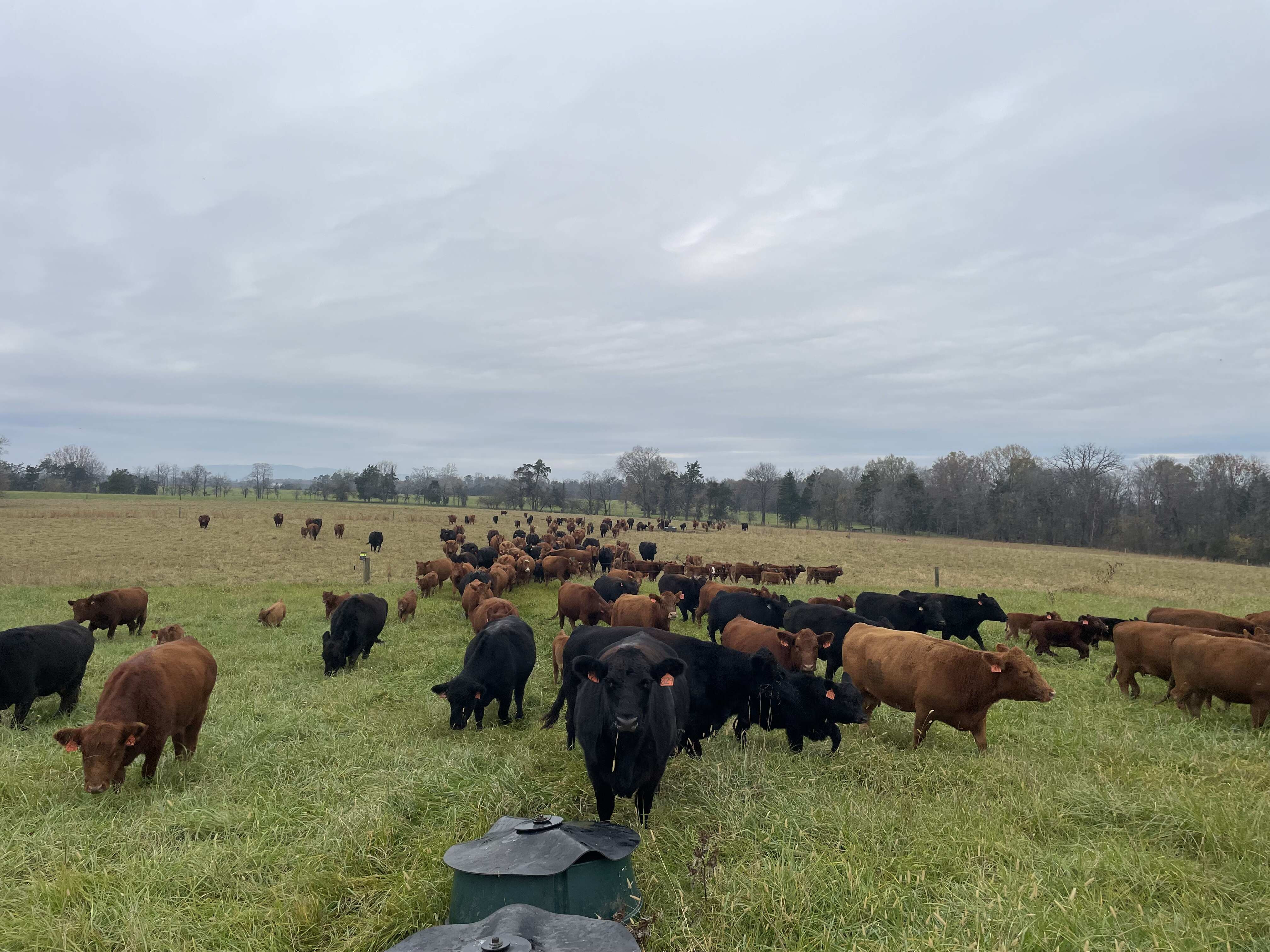A Thought on Grass-Fed
posted on
June 15, 2023
Garrett and I have truly valued the part of farming that creates community. There have been many important connections and paths crossed that have made our small business feel like a part of something much greater, like we have found our life’s work and we have the support. This regenerative farming movement has placed mentors into our grasp that we otherwise would not have found, several local and others as far away as Missouri. “A rising tide lifts all boats” is a quote that keeps coming to mind when I think of what is happening here.
Just yesterday, Garrett got a call from the slaughterhouse where he works on Tuesdays that a man left him a box of reading material. Garrett has been talking about this gentleman for several weeks and about how his grass-fed beef was some of the best he’s ever seen. Everyone assumed the animals were grain-finished and that there was no possible way. Garrett cold called him and got to talking (one of Garrett's best skills). He discovered his family farm was being sold and he was transitioning out of farming, but he has been dedicated to raising grass-fed cattle for years. In this box were over 50 issues of The Stockman Grass Farmer, books by Allen Williams, Jim Gerrish, Allen Nation and more (some of the big wigs of Regenerative Agriculture).
To be clear, though our cattle are raised on pasture and rotated their whole lives, we do not label our beef as grass-fed finished because we supplement with a forage pellet and grain. Our pastures are in transition to grow a grass-fed product in sync with our values, but we are about a year away from this experiment. This process takes time and should not be rushed.
I say the following not to cast judgment because we never truly know the whole story, but rather to shed light on what we are up against: too often, Garrett has seen animals come in that are labeled grass-fed but have bellies full of corn, or conversely are labeled grass-fed and are truly malnourished. So much of this market is based off an honor code. Ask the hard questions and know your farmer--because so much of this information gets lost in the weeds even under the umbrella of pricy certifications.
The man who gifted Garrett this box–it feels like he passed him a baton.



